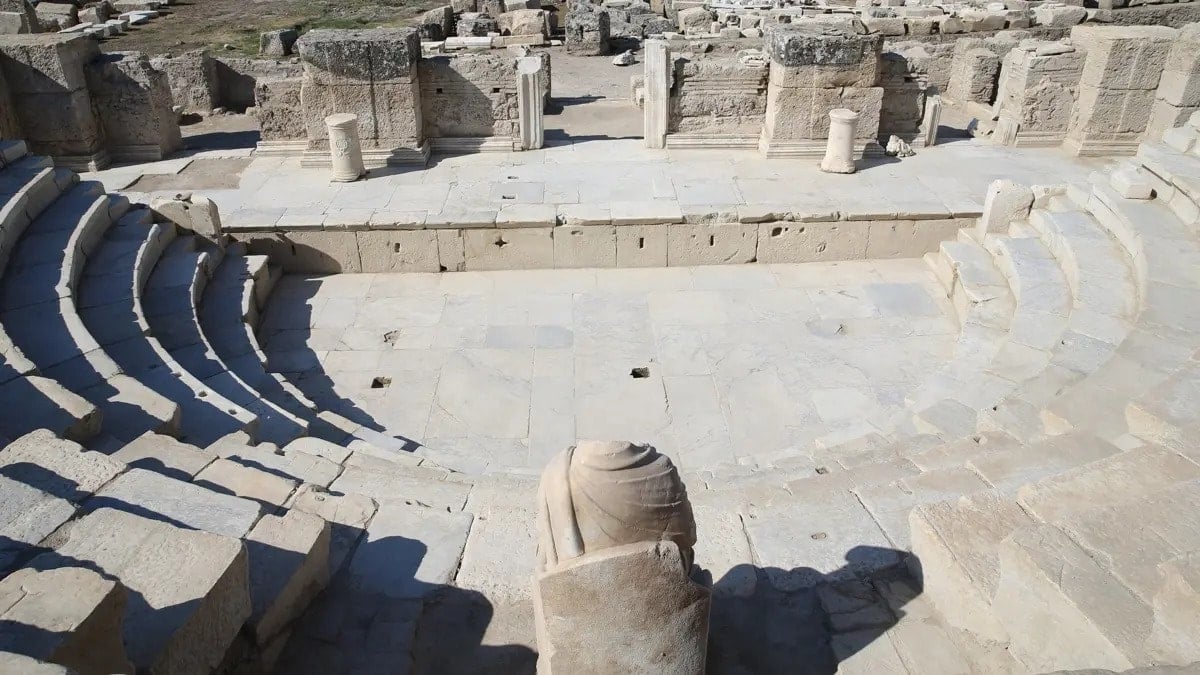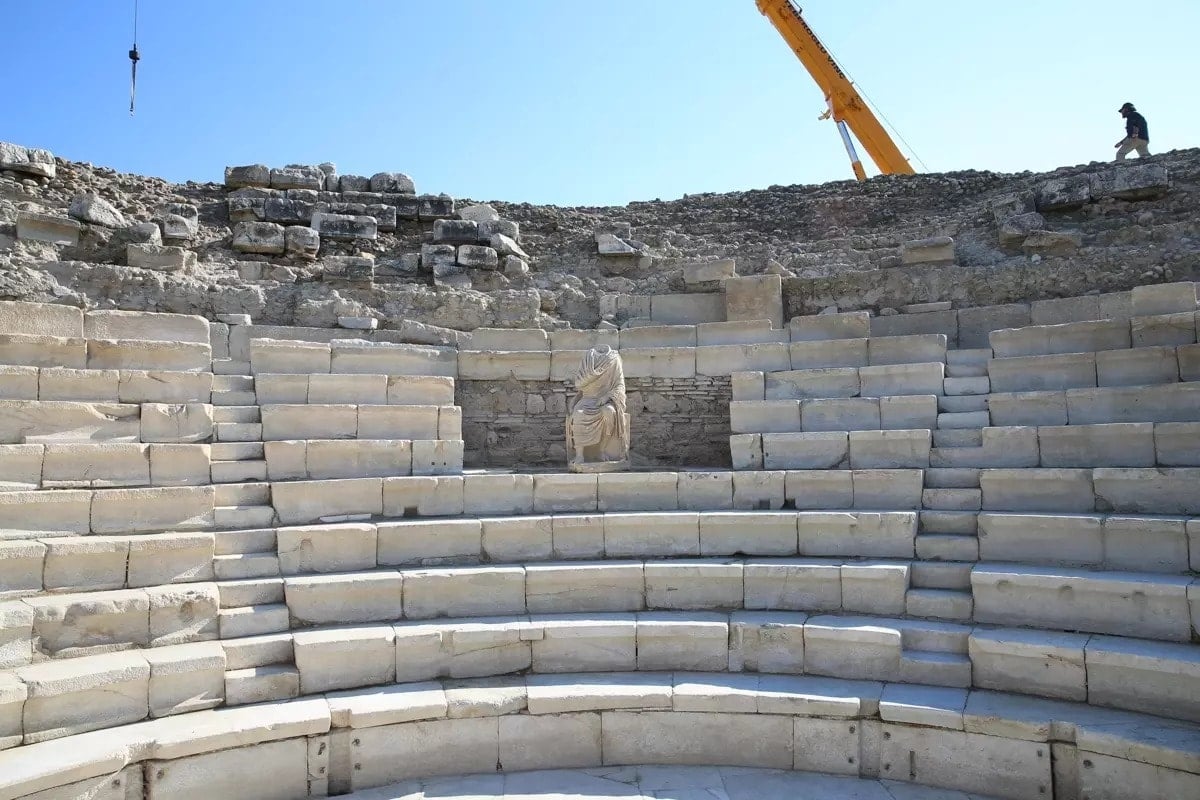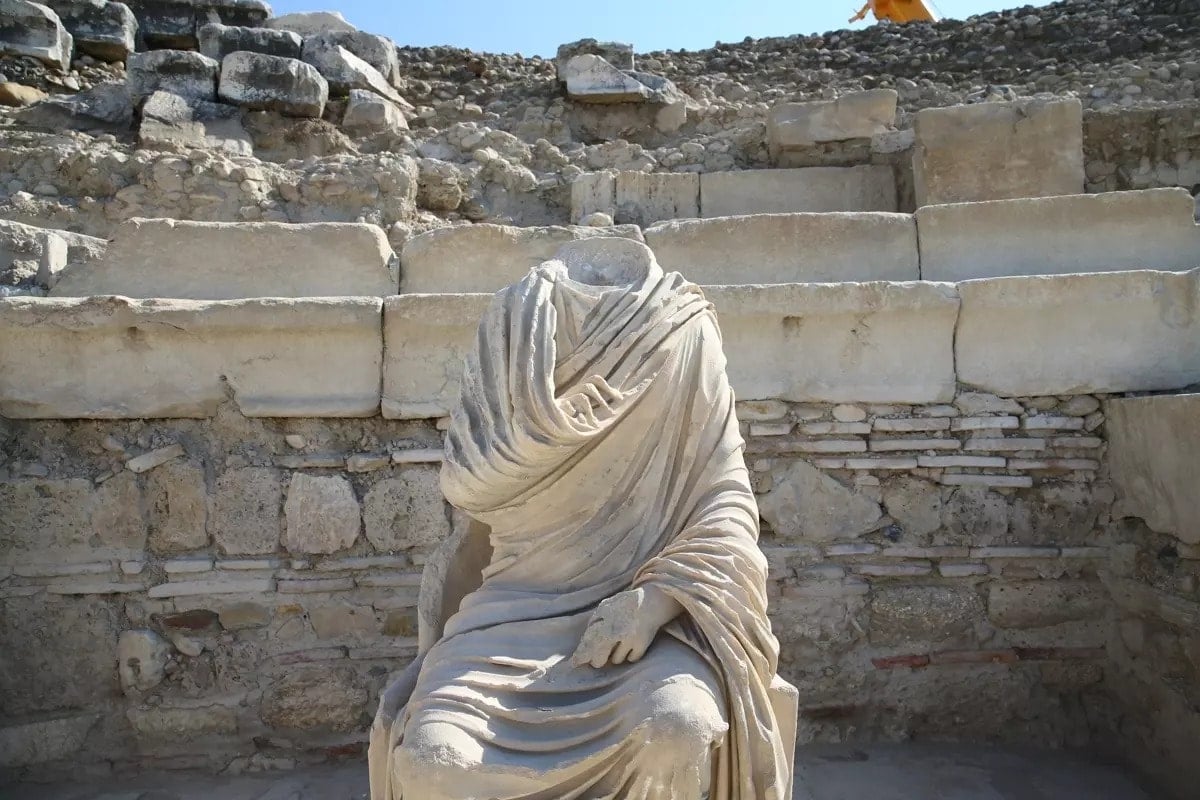A 2050-year-old parliament building was discovered in Denizli.

A 2,050-year-old council building was unearthed during recent excavations in the ancient city of Laodicea, which is on the UNESCO World Heritage Tentative List. Excavation Director Prof. Dr. Celal Şimşek noted that the building operated uninterrupted for 750 years, adding, "Considering that this structure was used until the 7th century AD, it is a very important structure that served for administrative, management, and judicial purposes in Laodicea uninterruptedly for approximately 750 years."
The ancient city, whose history dates back to 5,500 BC, was unearthed 22 years later through excavations and restoration. The excavations unearthed frescoed travertine blocks, a 3-meter-tall statue of Roman Emperor Marcus Ulpius Nerva Trajan, the Trajan fountain, a statue of a priest's head, and the Scylla group of statues. This year's excavations focused on the parliament building, bringing to light the building that once served as the heart of the city.

Şimşek, stating that this was the first time they had encountered such an architectural style, noted that Laodicea was one of the largest metropolises in Anatolia. He noted that the Assembly served as the center of the city's judicial affairs, saying, "We already know that it was an administrative center overlooking seven to ten cities. When we began excavating the Assembly building, we found that the surrounding walls were pentagonal, and the front had a hexagonal structure. This is the first time we have encountered such an architectural style."

Şimşek stated that the upper and lower seating steps were uncovered and that the entire lower seating section was intact, adding that the names of the council president and council members were written on these steps and that they were able to recognize the council members who served at that time.

Şimşek stated that they determined that the council members were composed of the elderly, young people and the public, and that there were 17 rows of seats in the building, 8 in the lower section and 9 in the upper section. He added:
"We know that it was built during the reign of Emperor Augustus, approximately after the mid-1st century BC. The council building was used until the city was moved in the 7th century AD. Considering the dimensions of the seating steps, we think it held approximately 600-800 members. However, after Laodicea became the capital of the Phrygian region, it also became the judicial center."
THE GOVERNING HEART OF THE EMPIREŞimşek, explaining that they estimate that the statue they found in a sitting position during the parliament building excavations represented an administrator, chief judge, or administrator at the time, said, "This statue dates back to the 2nd century AD. However, we date the head placed on it to the 400s. This means that during the time the judicial system was in effect, the person here sat as chief judge. Portraits of the presidents and judges who changed over time were recreated and placed here. This is the first and only place in this respect. It was in use from the Augustan period until the 7th century. Emperor Hadrian came here in 129 AD. Following his arrival, a large-scale renovation was carried out here. This is because the architectural blocks reveal them."
Şimşek, who stated that excavations in the parliament building are nearing completion, noted:
"We're talking about a 2,050-year-old structure. Considering that this structure was used until the 7th century AD, it's a very important structure that served Laodicea for approximately 750 years without interruption, serving both administrative, administrative, and judicial functions. We believe there was a political agora right in front of it. On either side of the council building are archive halls. To the south of the agora is the Southern Bath Complex, one of the largest bath complexes in Anatolia, and next to it is Anatolia's largest stadium. In other words, this place is particularly important because it was a very important area—what we might call the 'administrative heart'—of Laodicea during the imperial period."
SÖZCÜ





